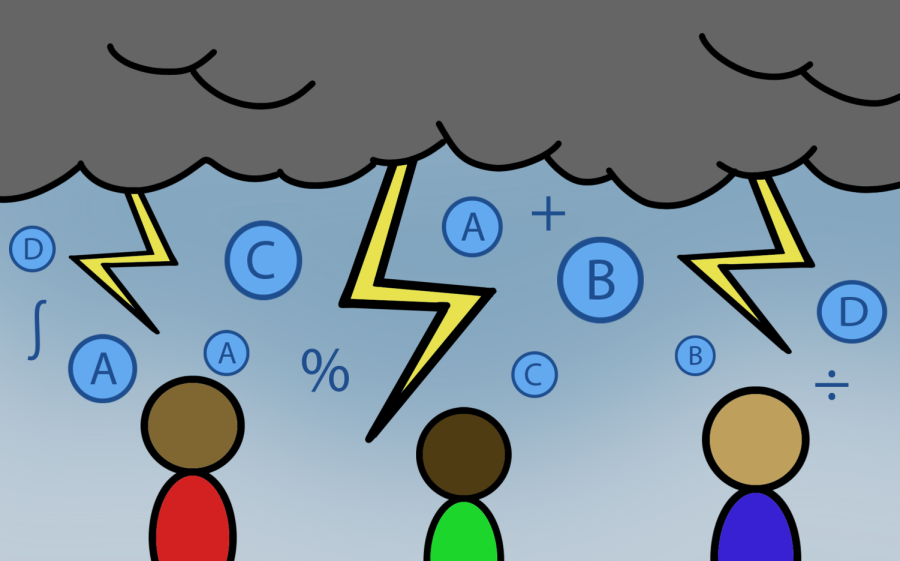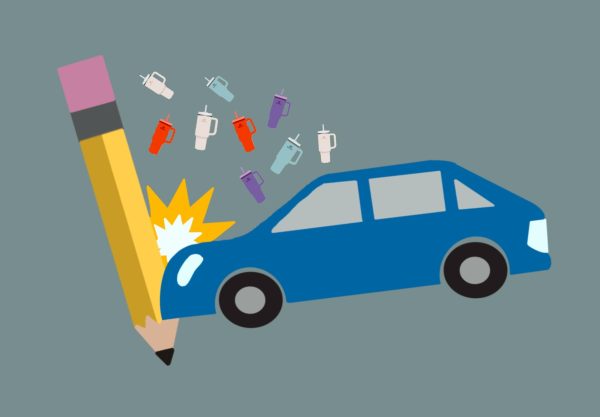SAT math scores highlight racial inequality
Black and Hispanic students score lower on the math section of the SAT, on average, than White and Asian students. However, the cause of this problem extends beyond schools. Racial disparities in SAT math scores are symptomatic of larger issues within students’ surrounding environments.
January 25, 2022
Established by the College Board In 1926, the SAT was created to provide students with an equal opportunity to earn scholarships and compete for college admission. Today, standardized test scores reflect racial and financial inequality, the very thing the SAT sought to diminish.
Historically, Black and Hispanic students have scored lower on the math section of the SAT than White or Asian students. While this may appear to be an educational difference, it is not the place of schooling that causes this discrepancy, but generations of exclusionary housing and financial differences.
A student’s ability to succeed both academically and socially can be impacted by what environment the child was raised in. School readiness requires physical well-being, emotional health, social knowledge, language development and cognitive skill. The US National Library of Medicine finds that children from low-income families often do not learn the social skills required to prepare them for school. These children are often disproportionately children of color.
A study by the Annie E. Casey Foundation found that 80 percent of Atlanta’s Black children and 43 percent of Hispanic children live in communities with high concentrations of poverty compared to only six percent of their White peers and 29 percent of Asian students. These neighborhoods often lack access to critical resources such as high-performing schools and quality medical care. Children born into poverty are at an extreme disadvantage when it comes to succeeding academically and scoring high on standardized tests such as the SAT.
The Brookings Institution, a nonprofit research organization, found that for the class of 2020, average scores for Black students (454) and Latino or Hispanic students (478) were dramatically lower than the scores of their White (547) and Asian peers (632). The number of students reaching the college-readiness benchmark (530) also varied by race. Over half of white students and four-fifths of Asian test takers met the math benchmark, while less than a quarter of black students and under a third of Hispanic or Latino students were able to do the same. While there are similar patterns in the English section of the SAT, the gap is less significant.
Although it is easy to blame underfunded schools for these testing outcomes, the root of the problem is not the school itself but the surrounding environment. Toxic stress is a concept used to describe the impact that trauma, such as emotional abuse or criminal activity, can have on children and their educational resources. The Economic Policy Institute claims that children who witness high levels of crime and experience the dangers of poverty mirror these stresses on their test scores and their overall academic success. While education reform programs such as Social Emotional Learning (SEL) have been put in place to provide support to students, efforts have failed to make a meaningful difference in the achievement gap between Black and White children.
Reform programs primarily focus on in-class factors and fail to understand the pathways by which social and economic disadvantages contribute to academic performance, behavioral outcomes and greater health morbidities. The Washington Post found that for Black children, frightening and threatening experiences are compounded by the injuries of discrimination at school and elsewhere. This helps explain why toxic stress is more common among low-income Black and Hispanic children than among low-income children generally. Children facing stressful mental and physical conditions have shown to have below-average math skills than those who have not.
Brookings claims that while there is a possibility that the SAT is racially biased, the observed racial gap in test scores may overstate the underlying academic achievement gap. Even if this gap is overstated, additional support is still needed to assist communities in developing safer and healthier learning environments for Hispanic and Black children.
Increased partnership between the health sector and community development can help optimize intervention strategies for mental health and provide educational interventions for disadvantaged children. This is a systemic issue and is not the fault of the schools, but the neighborhood and culture around them. SAT math scores do not reflect just academic understanding; they reveal economic, financial and racial inequality. In order to truly close this gap, more resources must be allocated to help children truly succeed, no matter what their background or race may be.














